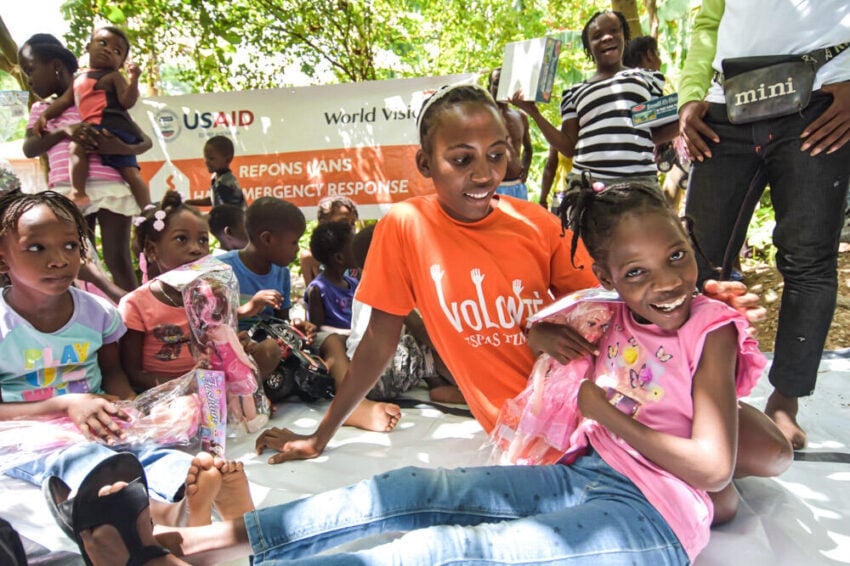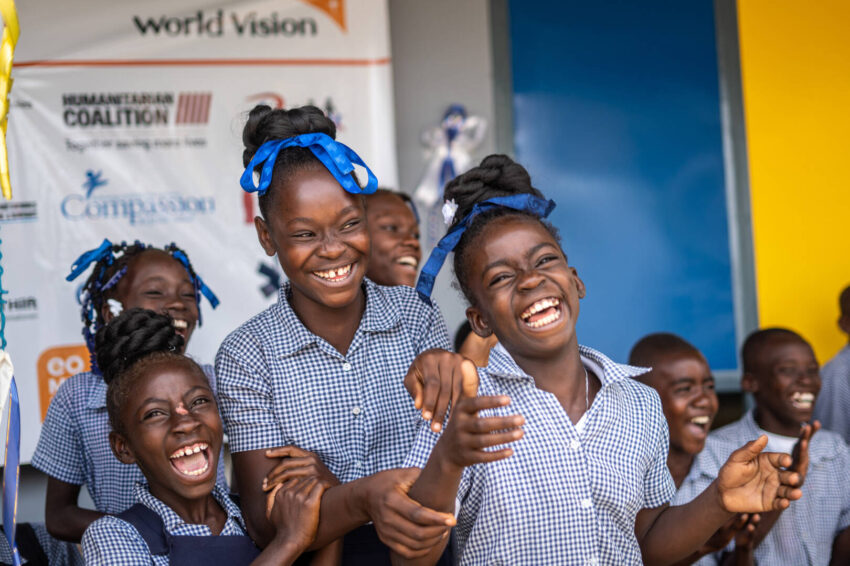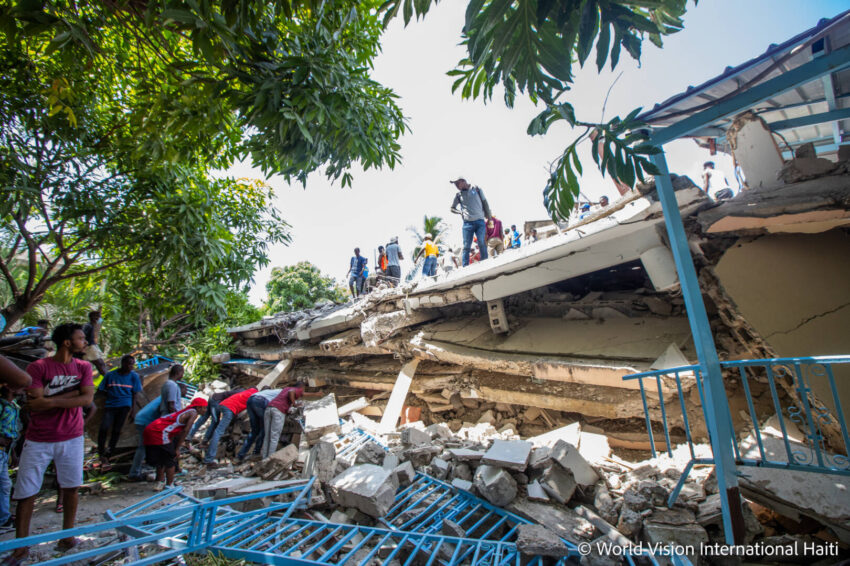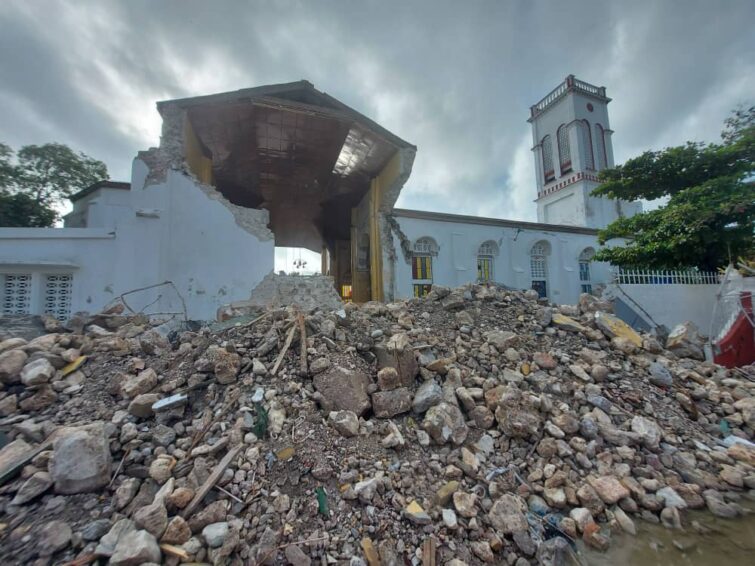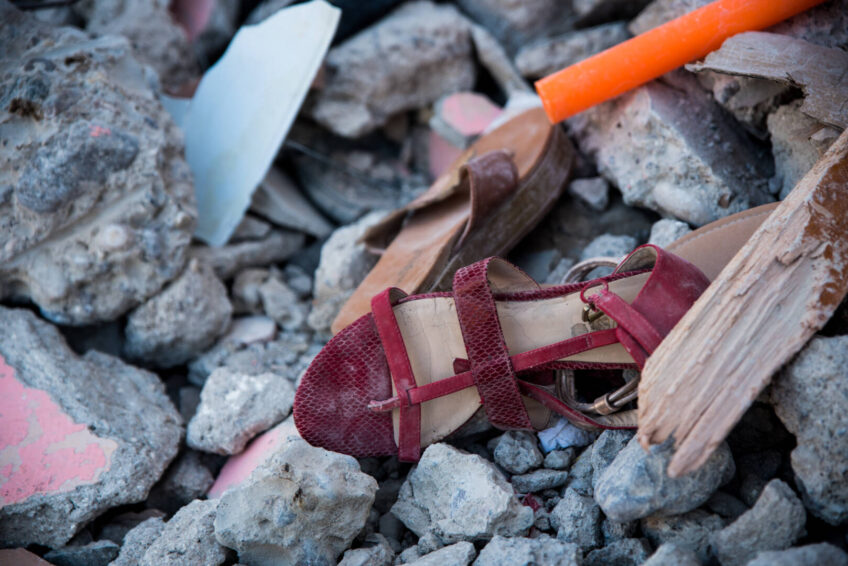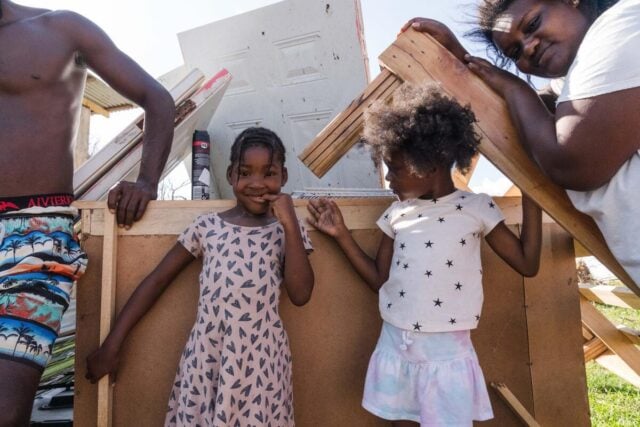Since the devastating earthquake that struck Haiti on August 14, 2021, the country has experienced a worsening series of crises. The magnitude 7.2 earthquake claimed several thousand lives and injured many more. The disaster exacerbated Haiti’s already fragile state. The country has been struggling with political instability, gang violence, and economic hardship, compounded by a history of natural disasters like the 2010 earthquake that claimed 300,000 lives.
In the wake of the 2021 earthquake and combined with the other ongoing crises, hundreds of thousands of people, including 2 in 3 children, require urgent assistance. Fuel shortages, continuing armed gang violence, and logistical challenges have disrupted relief efforts.
Haiti earthquakes: Facts, FAQs, and how to help
Explore facts and frequently asked questions about the 2021 and 2010 earthquakes, and learn how you can help vulnerable Haitians today.
- Fast facts: 2021 and 2010 Haiti earthquakes
- How did World Vision respond to the 2021 earthquake?
- What challenges does Haiti face today?
- Why was the 2010 Haiti earthquake so destructive?
- How did World Vision respond to the 2010 Haiti earthquake?
- How can I help vulnerable children and families in Haiti?
Fast facts: 2021 and 2010 Haiti earthquakes
- 2021 earthquake: Striking near Petit-Trou-de-Nippes, the 7.2 magnitude 2021 quake claimed over 2,000 lives and affected more than 1.2 million people, including 540,000 children, as reported by UNICEF.
- 2010 earthquake: A powerful 7.1 magnitude quake devastated the capital, claiming 300,000 lives.
- Location: The epicenters of the 2021 and 2010 earthquakes were approximately 63 miles apart and along the same fault line.
- Vulnerability: Haiti remains prone to natural disasters. Over the past decade, the country has endured nine disasters, including the 2016 Hurricane Matthew and the 2025 Hurricane Melissa.
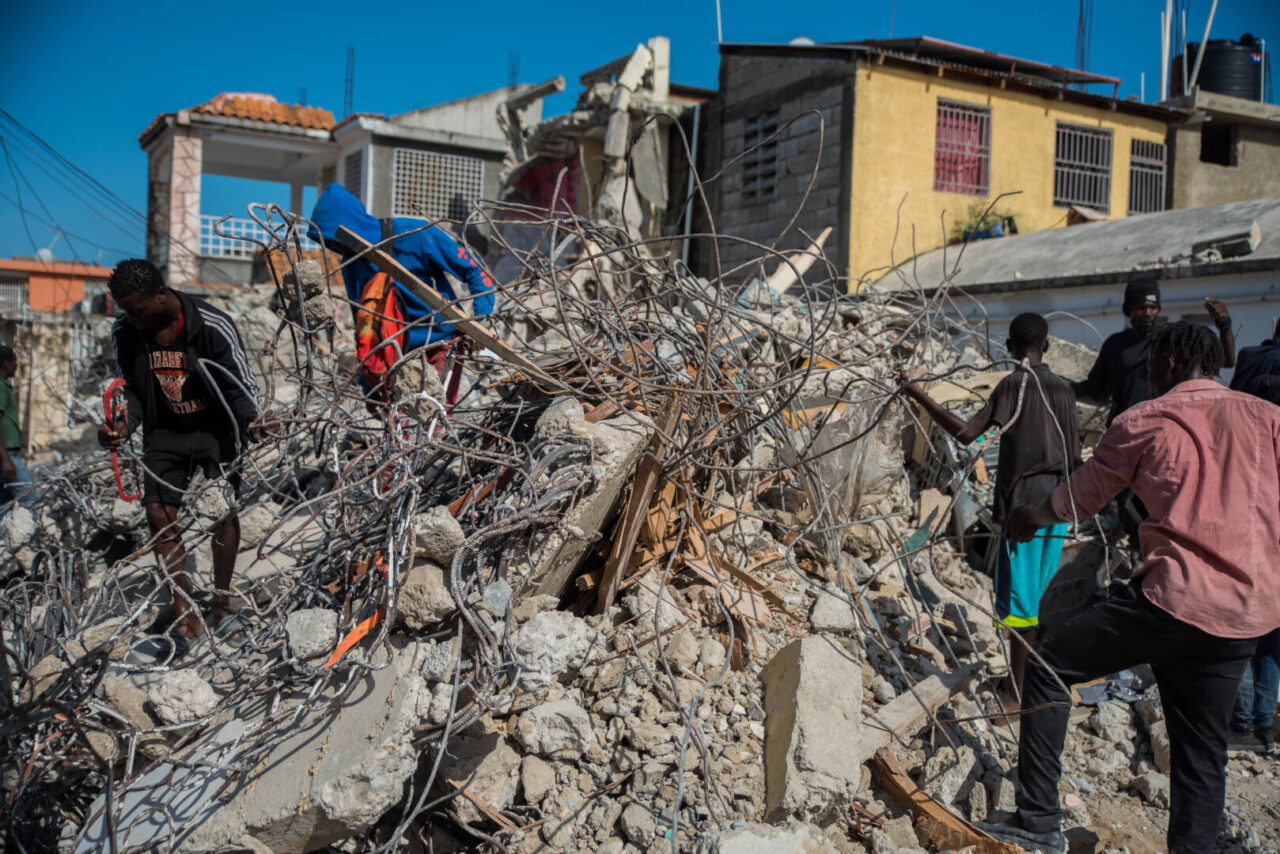
How did World Vision respond to the 2021 earthquake?
While World Vision’s programs were initially outside the quake-hit southern zones, we responded immediately, ultimately reaching over 155,000 people impacted by the disaster. Key areas of our impact include:
- Health and nutrition: Our health and nutrition programming, including mental health and psychosocial support, helped approximately 150,000 people.
- Cash assistance: We provided cash assistance to 11,120 people for essential food and living expenses.
- Food security and livelihoods: Our food security and livelihoods programs reached over 71,000 people through support like food vouchers, savings groups, and agricultural recovery programming.
After the quake, rebuilding lives and livelihoods
Alfred, a merchant in Petit-Trou-de-Nippes, found hope after the 2021 earthquake devastated his home and business. His children, Kervens and Erika, who were 18 and 13, respectively, at the time of the earthquake, were able to attend school, both eager to keep learning and dreaming, while Alfred returned to run his own business successfully.

His family suffered a great loss, with their possessions buried beneath the wreckage of their home. Everyone in the community scrambled to find necessities like food, water, and shelter.
“It was a dark time for our family as we faced scarcity in every aspect. Food became a luxury, and our trade was no longer a priority for the people. Everyone was focused on finding sustenance, just like us.” —Dipon, Alfred’s wife
After the disaster, World Vision identified vulnerable households like Alfred’s and quickly supplied them with essential items like food, cooking utensils, and bedding. We also distributed seeds, delivered goats, and provided cash to support his sustainable recovery. With the seeds and the 25,000 gourdes (approximately $184) he received from World Vision, Alfred started a garden that nourished his family throughout the year and expanded his business, which is now consistently profitable. He also joined a World Vision savings group, where merchants can support each other.
Alfred said World Vision’s support exceeded his family’s expectations. “In my time of need, what I craved the most was food and money. I am astonished by how World Vision went above and beyond my expectations,” Alfred said. “They not only provided money and food but also seeds and invaluable items that helped us rebuild our lives,”
Alfred added: “Today, my life has undergone a tremendous transformation. I wake up each day knowing my family has enough food to eat. My children attend school regularly, and my business provides me with a dignified living.”
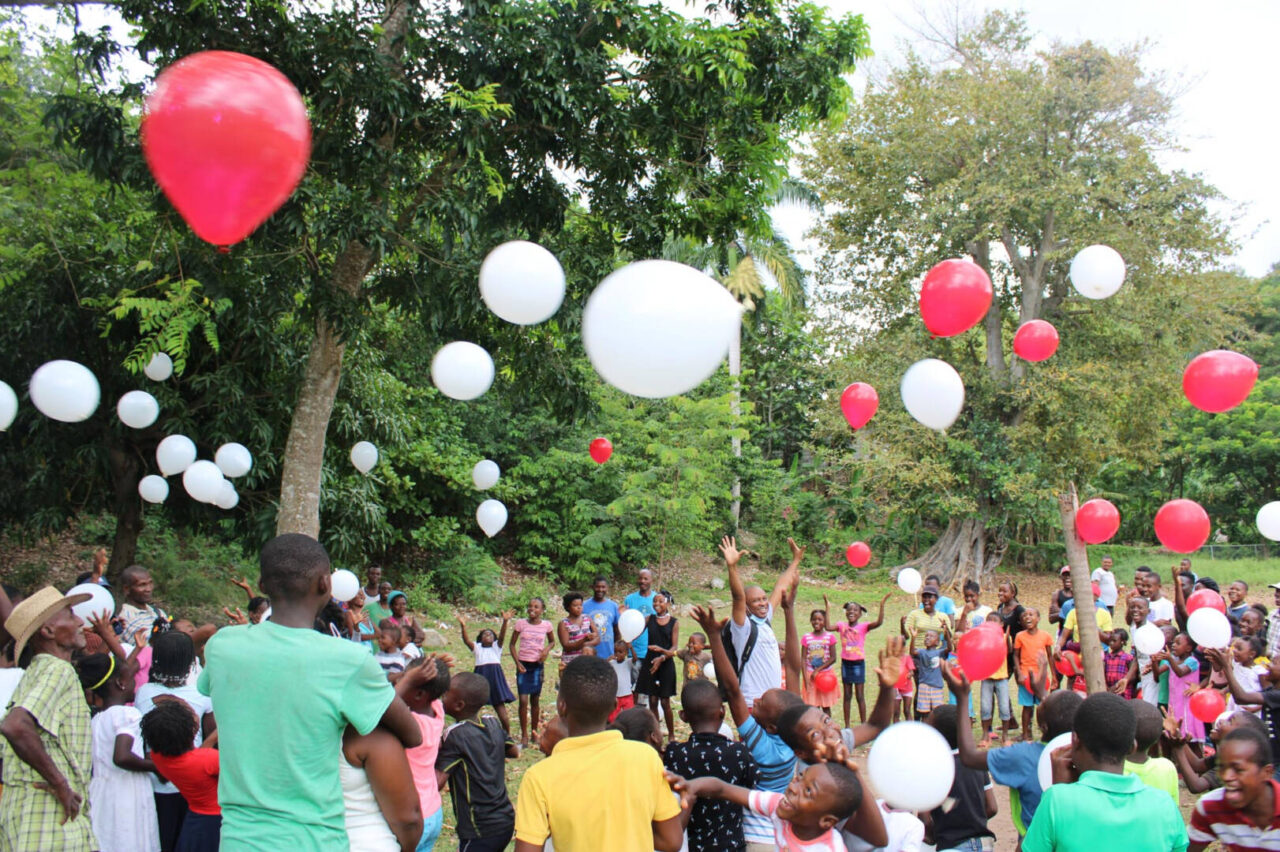
What challenges does Haiti face today?
Haiti faces compounded crises alongside natural disasters like earthquakes and hurricanes, including the 2025 Hurricane Melissa. Political instability, gang violence, and economic struggles have escalated in the country, leaving 5.5 million people in need of humanitarian aid.
Gang-related crimes, including armed robberies and kidnappings, have hampered aid efforts, while half the population suffers from acute hunger.
Learn more about the Haiti crisis and how World Vision is responding.
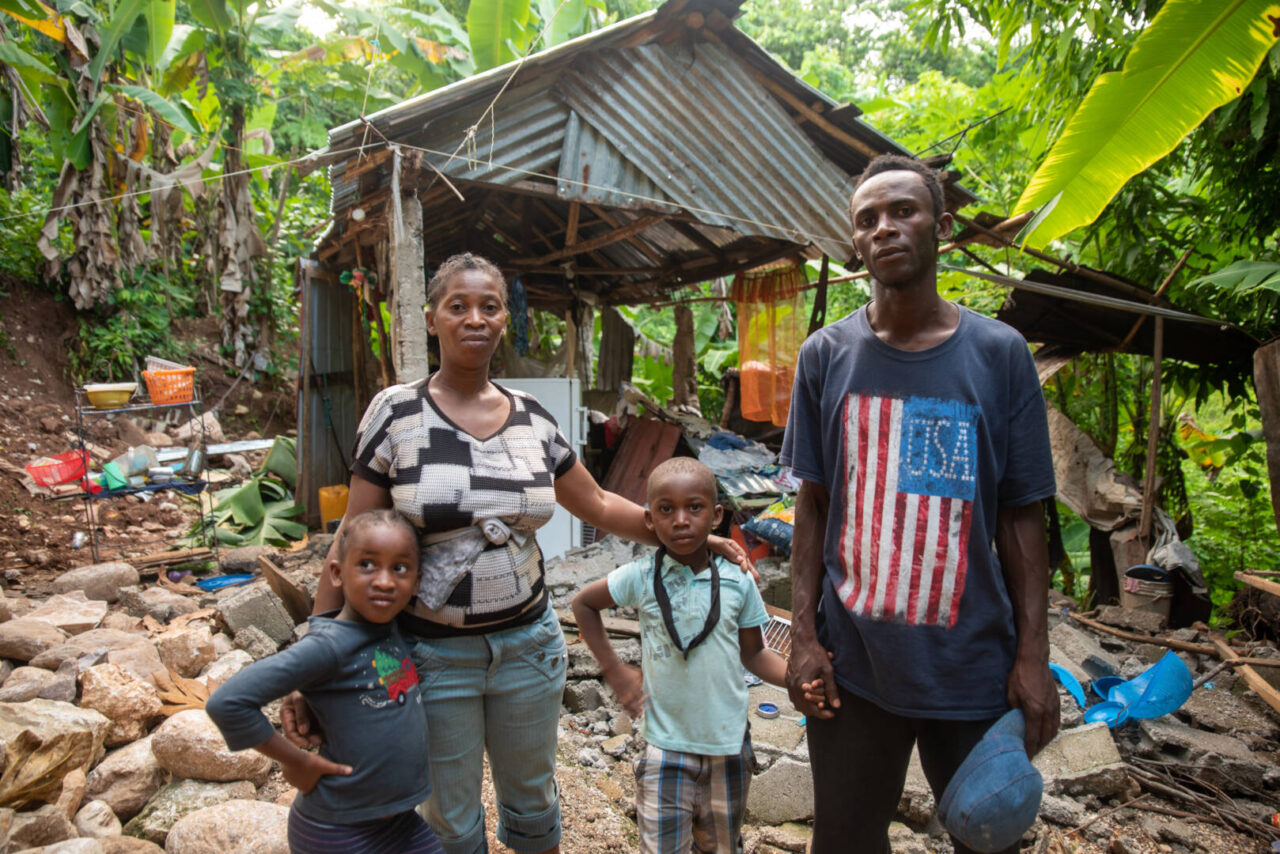
Why was the 2010 Haiti earthquake so destructive?
The 7.0 magnitude earthquake struck a shallow depth (6.2 miles below the surface), intensifying its impact. With its epicenter just 15 miles away from Port-au-Prince, the capital city where over 2 million lived, inadequate building standards and poor construction led to catastrophic building collapses. As a result, Haiti faced its greatest humanitarian need in its history.
How did World Vision respond to the 2010 Haiti earthquake?
World Vision’s response to the 2010 quake was its largest-ever coordinated effort at the time. Within minutes of the quake, our local Haitian staff, who also faced significant losses due to the disaster, distributed pre-positioned emergency supplies. In the following years, their dedicated and unwavering efforts helped save lives, alleviated suffering, and equipped thousands of affected Haitians to build a more hopeful future.
We supported nearly 2 million people in the first 90 days, offering essentials like food, shelter, and access to clean water, sanitation, and hygiene solutions. Our key achievements from 2010 to 2015:
- 300,000 people were treated for cholera.
- 250,000 students were fed across 800 schools.
- Over 200,000 people were sheltered.
- 90,000 displaced people in camps accessed potable water for almost two years.
- 19,000 farmers were trained in improved agriculture techniques.
- 30 Child-Friendly Spaces were established for nearly 8,000 children.
- 10 schools were constructed.
We stayed in impacted communities and supported families as they rebuilt their lives. World Vision remains committed to empowering Haitian children and families toward sustainable change, helping equip them for a fuller life.
How can I help vulnerable children and families in Haiti?
- Pray: Lift up children and families affected by recurring disasters in Haiti.
- Give to World Vision’s Disaster Relief Fund: Your gift will help provide emergency food aid, agricultural support, clean water, healthcare, and other essential care to children and families affected by disasters like both the 2021 and 2010 Haiti earthquakes and numerous hurricanes.
- Sponsor a child in Haiti: Help change a child’s life story and the future of their family and community by equipping them with access to nutritious food, healthcare, clean water, quality education, and more.
Sevil Omer of World Vision’s U.S. staff contributed to this article.
